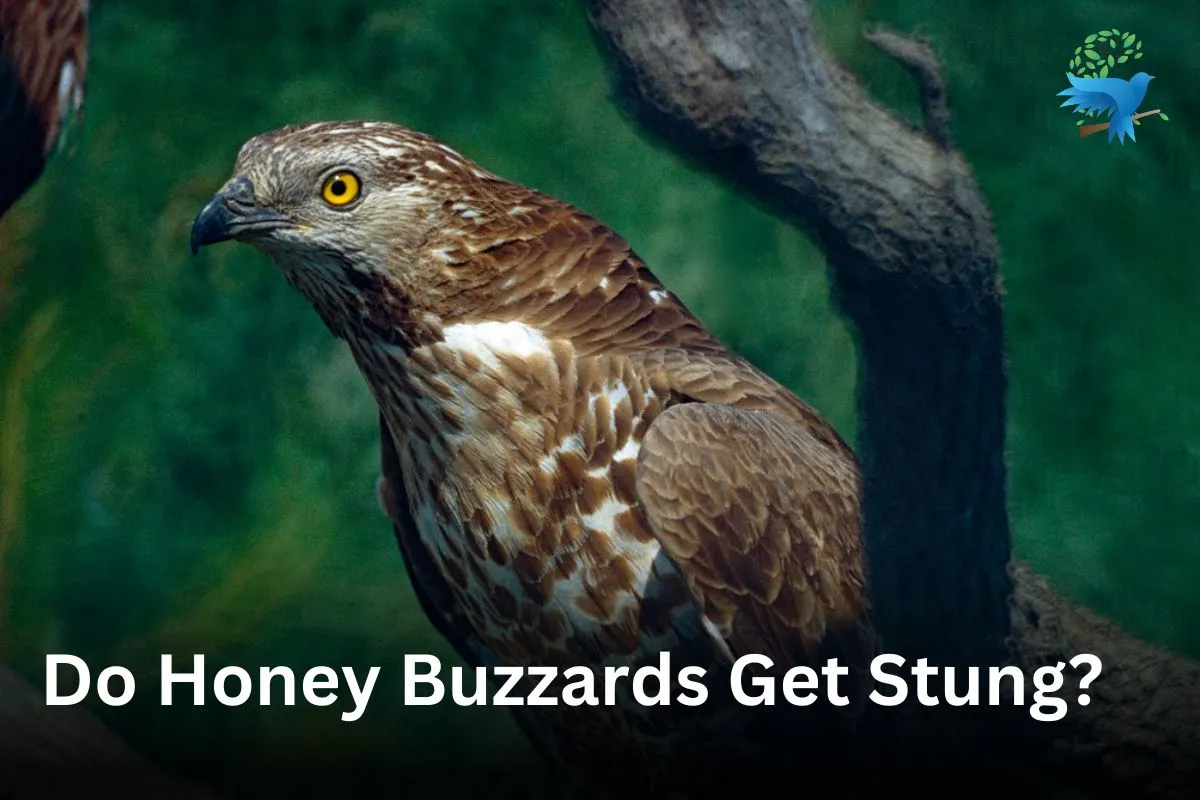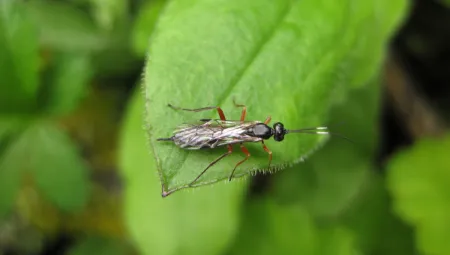Do Honey Buzzards Get Stung? Understanding Their Relationship with Stinging Insects

Scientifically, Honey Buzzards are also known as Pernis apivorus. If you are a bird enthusiast then these beautiful birds have captured the curiosity of the bird lovers by their exceptional flying abilities and distinct feeding habits.

Honey Buzzards is a predatory bird that belongs to the family of Accipitridae. One of the most enduring questions people are wondering about these fascinating raptors is “How do these birds interact with stinging insects”.
While navigating these raptors, arises an intriguing question- Do these formidable predator birds fall victim to the stings of bees, wasps, or hornets, with their keen hunting skills?
These raptors have a long neck with a small head and soar on flat wings. This bird of prey is mainly compared to the smaller Common Buzzard. Pernis apivorus also known as The European honey buzzard or pern or common pern can easily be classified based on their plumage.
In this blog post, we will delve deeper into this article to the intricate relationship between Honey Buzzards and stinging insects to reveal the truth behind them in detail.
Understanding Honey Buzzards
These buzzards are medium-sized raptors that exhibit unique characteristics while distinguishing them within the Avian world.
Honey Buzzards have a larger and as well as longer winged size of about 20-24 inches (52-60 cm) and a wingspan of about 53-59 inches (135-150 cm).
Additionally, they have soar on flat wings which often hold their wings in a shallow “V” shape. The appearance of this bird may vary highly with some other birds.
When it comes to recognizing the Honey Buzzards have honey-colored plumage, longer tails, and neck with a small head. Unlike other predator birds, these species of birds possess slender bodies, elongated tails, and sharp talons adapted for hunting.
Primarily, Honey Buzzards’ diet consists of the larvae, nests, and adults of stinging insects. Such as wasps, bees, and hornets. There is a misconception contrary to their name that they feed on honey.
But, these species of birds do not consume honey. Buzzards’ distinctive characteristics have made people wonder and confused about whether these Honey Buzzards get stung while eating insects.
Do Honey Buzzards Get Stung?
Scientific researchers have observed that Buzzards have evolved specialized adaptations. When they feed on stinging insects, there is a contrary belief that Honey Buzzards are not affected by their harmful or painful stings.

This only became possible when Buzzards adopted a thick plumage that enabled them to act as a protective shield for their feathers. Along with their eyes and face that reduces the chances of being stung.
Interestingly, this technique has been adopted by Buzzards to showcase how to handle stinging insects.
This bird mainly focuses on young ones such as larvae and pupae that help them to avoid getting stung. Their swift and precise attacks have reduced the risk of exposure to being stung by the venomous stingers.
Adaptations and Behaviors
This fascinating bird of prey has developed one of its unique features, this bird i.e. raptors can hunt their prey without being stung. It helps to protect or armor them from painful stings.
Notably, one of the most observed adaptations of Honey Buzzards is their ability to secrete a sticky, oil-like substance from their preen gland.
You May Also Read More: Types Of Woodpeckers in Virginia: A Comprehensive Guide to the 8 Different Species>>>
This preen gland also known as the Uropygial gland, helps to secret bilobed sebaceous gland by the birds through plumage. Such an act is done by the birds to coat their feathers and acts as a deterrent against the penetration of insect venom.
Birds usually rub their beak on their glands which secretes the oil that spreads all over their feathers to keep them clean, healthy, and protected from danger.
Their exceptional agility and swift movements enable them to hunt their prey swiftly and evade potential stings. The beautiful bird often flies quite low and relatively holds their body in a horizontal position with its tail drooping.
Buzzards can inspect the food locations from their perch, cocking their head can get good luck at possible food locations.
Evolutionary Explanations
The relationship between Honey Buzzards and stinging insects is a testament to the intricate balance in nature. Buzzards are capable of eating stinging insects without being stung.

Over the years of their generation, these raptors have evolved to develop into a specialized adaptation and their behavior.
By developing this special characteristic feature, it leads them to reduce the risk of getting stung by their prey. Such as from wasps, bees, and hornets. Minimizing the risks associated with it helps them to enable the exploitation of a niche food source.
These buzzards have scale-like feathers around their eyes and forehead which provide a covering against the stings of their prey. For instance, the relationship between them has contributed significantly to their survival and ecological niche.
Conclusion
To sum up, researchers are delving further to figure out the exact extent of Honey Buzzards. How they can resist getting stung remains a subject matter of ongoing inquiry.
Strongly, the evidence suggests that these raptors possess remarkable adaptations and behaviors to reduce the risk of consuming stinging prey. The evolutionary journey has enlightened them to come up with the right tools to hunt prey on stinging insects.

It showcases how wonderful nature can be to intricate adaptations. Furthermore, as we delve deeper to understand the complex dynamic between Honey Buzzards and stinging insects not only sheds light on avian adaptations.
But, in addition, it also emphasizes how nature keeps a delicate balance between the predators and their prey in the natural world.
Isn’t it just sound interesting, to understand how Honey Buzzards and stinging insects evolved together so far? This sustains the unique ecological relationship between them to preserve the habitats.
FAQs
How can we identify the male and female honey buzzards?
The main difference between male honey buzzards is that they have a blue-grey colored head. Whereas the female buzzard is slightly darker and larger than the male buzzard. Male and Female buzzards can also be identified based on their plumage.
Do Honey Buzzards eat honey?
Honey Buzzards do not eat honey. The scale-like feathers on their heads prevent them from being stung. Buzzards excavate deep for adult insects and larvae.
What is the wingspan of The European Honey Buzzard?
The European Honey Buzzard wingspan is about 53–59 inches or (135-150 cm).
Where is Honey Buzzard found?
The fascinating raptor, Honey Buzzard is mainly found near the Mediterranean Sea, Gibraltar Strait, the Messina Strait, the Bosphorus, Lebanon, or in Israel. During the summer season, they migrate to a small area in the Palearctic from most of Europe to as far east as southwestern Siberia.
Where do Honey Buzzards breed?
Honey Buzzards generally called Pernis apivorus breed in the woodland.
What do Honey Buzzards (Pernis apivorus) eat mainly?
Mainly, The European Honey Buzzards eat the larvae and nests of wasps and hornets. It also includes small mammals, birds, and reptiles. This bird is known as a predator of the Asian hornet or Asian predatory wasp.
